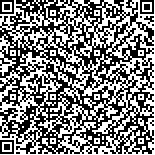|
|
| |
|
|
| 本文已被:浏览 314次 下载 453次 |

码上扫一扫! |
|
|
| 冬季东寨港微微型浮游植物丰度、分布及影响因素 |
|
石彭兰1,2, 王强俊1,3, 谭佐莉1,2, 赵思弈1,3, 汤锦铭4, 黄志雄1, 高树基1,4, 徐敏1
|
|
1.海南大学南海海洋资源利用国家重点实验室 海南海口 570228;2.海南大学生态与环境学院 海南海口 570228;3.海南大学海洋学院 海南海口 570228;4.近海海洋环境科学国家重点实验室 厦门大学海洋与地球学院 福建厦门 361102
|
|
| 摘要: |
| 微微型浮游植物是水环境生态碳汇的重要基石之一, 也是初级生产的重要执行者。选取了一个典型的陆海交界关键带环境——海南东寨港入海口水域, 采集了东寨港红树林保护区开阔水域、入港河流和新埠海海端的微微型浮游植物的样品, 通过流式细胞仪分析技术对样品进行分析, 以探究它们在东寨港水域中的丰度、分布及环境指示意义。结果表明, 冬季水域微微型浮游植物以真核浮游植物(Eukaryote, Euk)和聚球藻(Synechococcus, Syn)两大类群为主, 其中聚球藻有两个亚群, 分别为富含藻蓝蛋白聚球藻(Phycocyanin-rich, PC)和富含藻红蛋白聚球藻(Phycoerythrin-rich, PE)。Syn-PC、Syn-PE和Euk在东寨港水域表层水体的平均丰度分别为(2.61×104±1.09×104)、(3.06×104±7.05×103)、(1.56×105±8.03×104) cells/mL, 底层水体的平均丰度分别为(2.64×104±1.38×104)、(3.17×104±3.81×103)、(1.57×105±1.05×105) cells/mL; 河流和新埠海海端的平均丰度分别为(1.45×105±1.34×105)、(6.21×103±9.13×103)、(2.84×105±2.26×105) cells/mL。结果显示, 在不同水域中, Euk的平均碳生物量占比最高。相关性分析结果表明, 温度、盐度和pH是影响微微型浮游植物分布的主要因素。温度与底层水体中Syn-PC和Euk显著正相关, 与Syn-PE显著负相关; 盐度与Syn-PC和Euk存在显著负相关关系, 与Syn-PE显著正相关; pH与Syn-PC显著负相关, 与Syn-PE显著正相关。该研究结果丰富了对微微型浮游植物的认识, 补充了东寨港保护区开阔水域基础数据的空缺。 |
| 关键词: 微微型浮游植物 叶绿素a 流式细胞技术 聚球藻 真核藻 |
| DOI:10.11693/hyhz20221100288 |
| 分类号:Q948.8 |
| 基金项目:海南省重点研发计划项目, ZDYF2021SHFZ064号; 海南省研究生创新科研课题, Qhyb2022-34号; 南海海洋资源利用国家重点实验室开放课题基金, MRUKF2021017号。 |
|
| ABUNDANCE, DISTRIBUTION AND ENVIRONMENTAL CONTROL OF PICOPHYTOPLANKTON IN THE WINTER DONGZHAI HARBOR |
|
SHI Peng-Lan1,2, WANG Qiang-Jun1,3, TAN Zuo-Li1,2, ZHAO Si-Yi1,3, TANG Jin-Ming4, HUANG Zhi-Xiong1, KAO Shuh-Ji1,4, XU Min Nina1
|
|
1.State Key Laboratory of South Sea Marine Resources Utilization, Hainan University, Haikou 570228, China;2.Institute of Ecology and Environment, Hainan University, Haikou 570228, China;3.Institute of Marine, Hainan University, Haikou 570228, China;4.State Key Laboratory of Marine Environmental Science, College of Ocean and Earth Sciences, Xiamen University, Xiamen 361102, China
|
| Abstract: |
| Picophytoplankton is one of the important cornerstones of ecological carbon sink in aquatic environment and also an important performer of primary production. We selected a key typical land-sea interface environment: Dongzhai Harbor estuary aquatic area in Hainan, South China. Samples were collected from the inflow river of Dongzhai Harbor and Xinbu Sea, and analyzed by flow cytometer BD Accuri C6 to explore the picophytoplankton abundance, distribution, and environmental implications. Results show that eukaryote (Euk) and Synechococcus (Syn) were the dominant groups of picophytoplankton. Two subgroups of Synechococcus, i.e., phycoerythrin-rich (PE) and phycocyanin-rich (PC) were found. The mean abundances of Syn-PC, Syn-PE and Euk in the surface waters of the harbor were (2.61×104±1.09×104), (3.06×104±7.05×103), and (1.56×105±8.03×104)cells/mL, respectively. The average abundances for samples from bottom waters for Syn-PC, Syn-PE, and Euk were (2.64×104±1.38×104), (3.17×104±3.81×103), and (1.57×105±1.05×105)cells/mL respectively, and the mean abundance of the river and Xinbu Sea were (1.45×105±1.34×105), (6.21×103±9.13×103), and (2.84×105±2.26×105)cells/mL, respectively. Results of carbon biomass show that the average carbon biomass proportion of Euk was the highest in all water environment. The correlation analysis showed that temperature, salinity, and pH were the main factors affecting the distribution of picoplankton. Temperature was significantly and positively correlated with Syn-PC and Euk, and negatively correlated with Syn-PE in bottom water. Salinity was significantly and negatively correlated with Syn-PC and Euk, and positively correlated with Syn-PE. pH was significantly negatively correlated with Syn-PC and positively correlated with Syn-PE. This study enriched our understanding of picophytoplankton and filled the vacancy of basic data in the water of Dongzhai Harbor. |
| Key words: picophytoplankton chlorophyll a flow cytometry Synechococcus Eukaryote |
|
|
|
|
|
|
